09 Dec The Patent Blouse
Posted at 17:03h
in Pattern Making Instructions, Pattern Puzzles, Stretch Patterns, Vintage Patterns
0 Comments
Looking a lot like an origami bat, this weeks self-drafted #PatternPuzzle comes from some of the greatest minds of the 1960’s – the inventors filing patents for the next best thing in clothing production. July 2019 – this pattern is now available as a PDF download on this website – The Patent Blouse Sizes XS-XXL

Extracting the detail from the funny little patent sketches was probably one of the most frustrating self-drafted puzzles I have ever put together. It took me ages to make sense of the garment and the suggested shape for the pattern. I managed to unpack the shape by tracing the front half shape, then folding the paper and tracing half the back diamond shape. Then all I had to do was add the lower back section onto the front side seam. That’s how I arrived at the final pattern puzzle shape above.
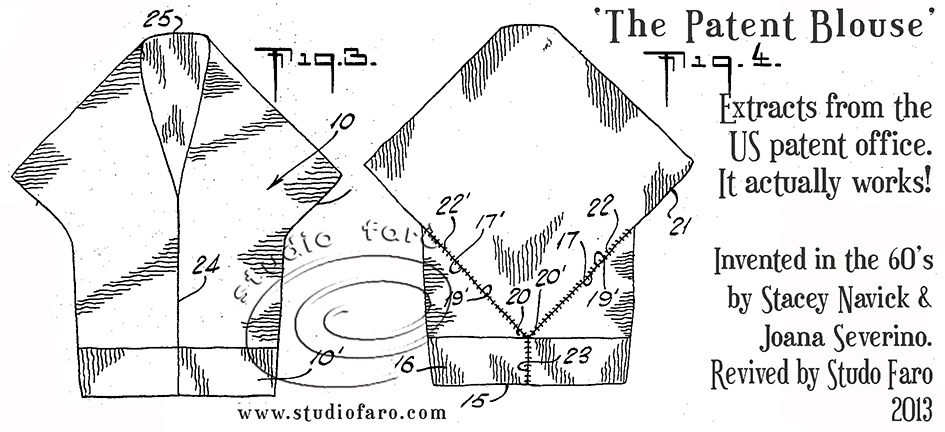
The diagram below has all the relevant markings to help with understanding the garment and how it goes together. As soon as I had this shape I decided to reverse engineer it onto a loose fit kimono block that I use in my freelance pattern making work.
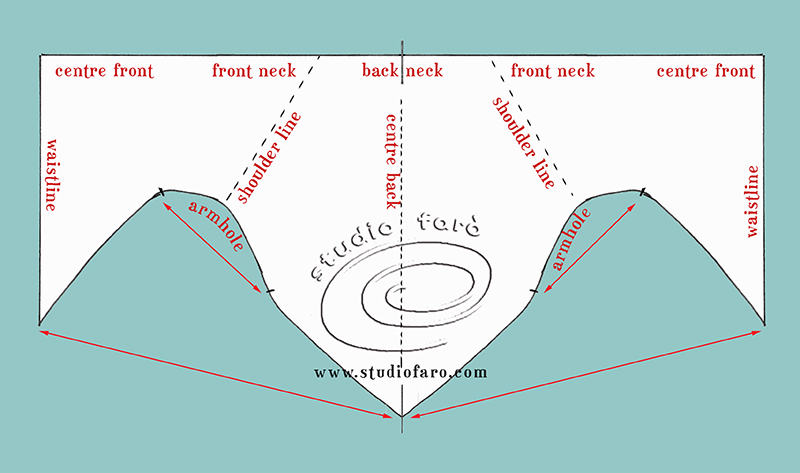
On the pattern plan below I’ve worked this top to the high hip although I think it could be made any length you desired. I have also marked up for a separate hip-band and front fastening as per the original sketch.
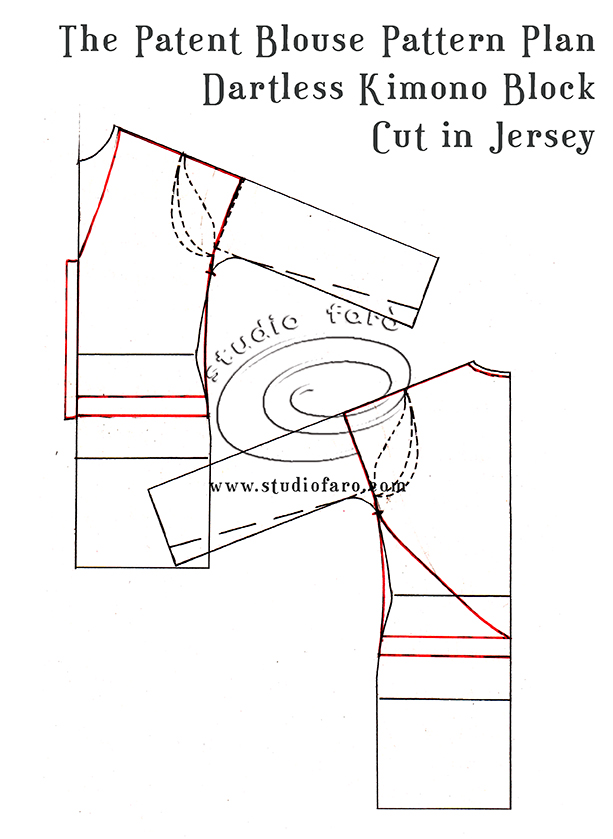
Tracing the front and back shapes I found the only way I could get the front and back centres to sit at right angles (as indicated in the patent sketches) is by placing the two shoulder points (SP) together and pivoting the back pattern to 90 degrees. This move does give you the correct angle to work to the plan but it also gives you extra fabric around the neckline. That accounts for the drape effect in the original sketch for the patent application.
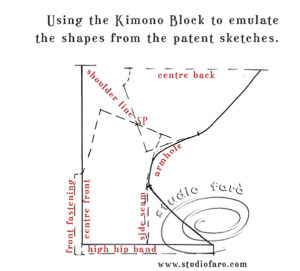
A few things I discovered along the way:
- the CF & CB lines are exactly the same length.
- the notches for the armhole fall approx. at thirds through the body of the pattern.
- the armhole may also need to be bigger than marked depending on the fabric.
- that extra fabric around the neckline drapes nicely.
- that it is possible to cut the trim in one piece with the pattern.
- you don’t necessarily need a front opening if your fabric is stretchy enough.
Before cutting, my alterations to the original shape were to add double the hip bandwidth onto the hem edge (+10cm) and a decent turnback (+4cm) onto the centre front edge. This way the whole garment can be cut in one piece, with only two seams and a turnback hem band and front opening. You may want to add a little stretch fusing to the front opening turn back if you want buttons or snap fastenings.
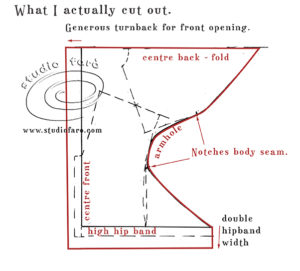
The first sample below was cut in a stripe-like pattern which really illustrates the change of direction in the garment front the CF line through to the back. The photos on the top are the inside of the garment. The photos on the bottom are the garment right side of fabric out with the hip-band and front edge turned in. As far as the centre front goes I will probably sew that up (my fabric is two-way trench) and use the wide fold back as a deep hem for the drape neckline.
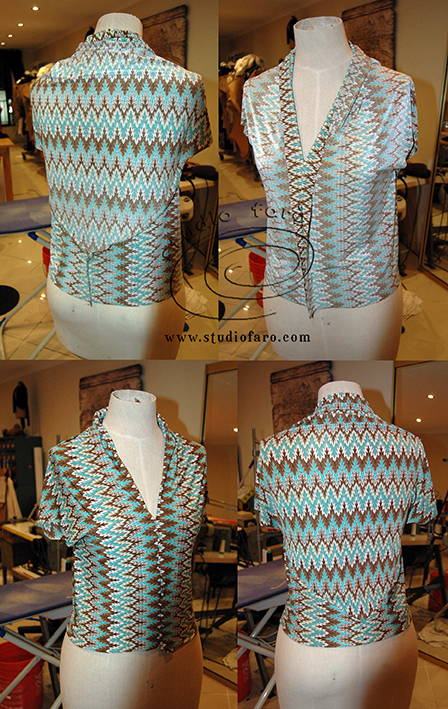
The following will give you a guide as to how to sketch up your own pattern. From my quarter-scale image, I calculated the scale-up to full size using 63cm on the CF and worked the rest out on a grid. So although I needed the Kimono Block to work my ideas out in the beginning, it did lead to a shape that can be calculated easily and altered for different fits. After you have sketched up the shape think about adding the front fastening and hip-band all in one with the main pattern.
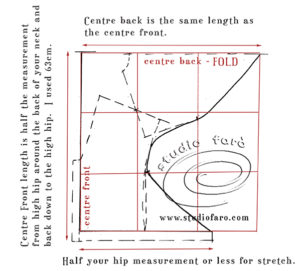
Overall I think there was a reasonable outcome for the first sample and imagine there is plenty of potential in most knits. However, I don’t believe it would work well in a woven. This was a fun project to work through and I really enjoyed demystifying the patent sketches and arriving at a reasonable garment. Let me know if you have any questions via email or in the comments section of this post. Enjoy!
App. 10.10.14: The Patent Blouse has been tested and sampled!
Take this moment to sign up for my fabulous newsletter! Every month or so I send an email newsletter with new website content and always, always an enormous discount code for all my sewing patterns, garment blocks and pattern making instructions.
This discount code is for subscribers only. Don't miss out!


No Comments